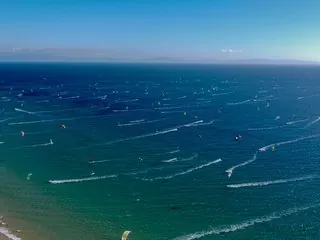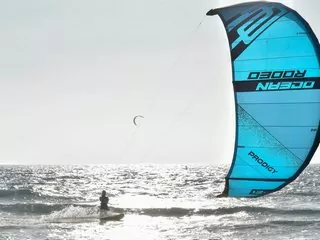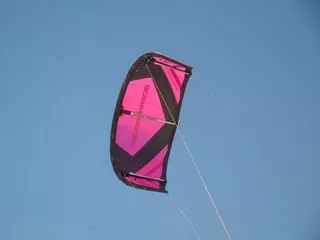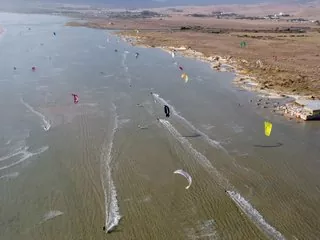
Choosing your first kite is always a challenge! There are a lot of brands, models, used, new... A thousand options but nothing clear! Our first advice... always listen to your kitesurf school! What we want today is answer the eternal question of:
The basic aspects to take into account when choosing your first kite are:
✅ Stability
✅ Depower and wind range
✅ Easy kite water-relaunch
✅ Modern safety systems

All kitesurfing kites should be stable, but there are some profiles that are more stable than others..
The stability of a kite is related to how it behaves in certain situations. If you park the kite at 12 o'clock (over your head), a stable kite should not fall off if you move downwind or wind is gusty. In the same way, if you leave the kite behind while kiting, it should return to the window without falling on you!
The depower is the characteristic by which, if you push the bar or release it, the kite should stop dragging you or have any power. Avoid "C" shape kites, as their depower is limited compared to other shapes.
The wind range is related to the operating window of winds in which it is safe to use the kite. If a 12m kite has a wide range, it means that you will be able to use it when there is very light wind, but it will still be comfortable for you and safe to use when wind picks up a bit. In this case, as in the previous one, if you are beginner, do not choose a "C" shape kite.
It is important in a beginner kite that it is powerful. Normally, a beginner should buy a large kite to use with low wind, where he will feel safer.. (Also, small kites tend to be faster!) It is important that the kite is powerful, so that even if the wind is very light, it can pull you.. It is always easier to start with extra power to keep you riding even if you make mistakes.

The water relaunch is a fundamental part to take into account. A kitesurfing beginner will crash the kite into the water regularly, so being able to relaunch it easily and quickly will help a lot with progression. Of course, again, the type of kite that has the worst relaunch is the "C"!
Safety systems come in the bar you buy with your kite. It is important that they are not very old kites / bars, as normally, their safety systems will be outdated and when the time comes, you may have a hard time. Our advice, invest a bit more money in your first kitesurf equipment and go safely to the water. If you buy second hand, avoid kites before 2015 or 2016!
What to look at in the safety system? First: that the quick release works and opens. Second: Acts over a single power line (avoid the bars that act on direction lines or the 2 front lines at the same time). Third: Easy to reassembly.
And we come to the final question...

There is no direct answer.. but surely, delta shape kites are the best kites for beginners. To make it easier for you, wave kites are usually VERY good kites for beginners due to their characteristics.
They tend to be kites with a lot of wind range, very good depower (when you are in the wave you do not want too much power on the kite), they usually have a very good drift, which makes them very stable.. and their re-launching of the water is usually quick and easy.
A good example of this type of kite could be the Ocean Rodeo Roam. The perfect kite for wave riding, foil, but also for beginners. That's why we use them to give our kitesurf courses in Tarifa.
Also take a look at our super guide to buy your first kitesurf equipment, where we explain step by step how to make the purchase of your first kite and that best suits your budget. And you also can take a look to our second hand kitesurf gear!

Carla and Rodri, combined experience flying kites of more than 30 years. And a Kitesurf World Championship...🔥